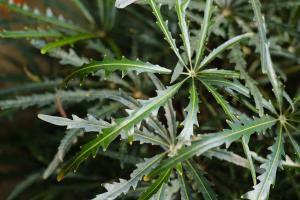Common disease types of flowers
The types of plant diseases can be roughly divided into four categories: fungal diseases, bacterial diseases, viral diseases and physiological diseases
Fungal diseases
Fungal diseases account for the largest proportion of diseases. The vegetative body of fungi is mainly mycelium, which grows inside and outside the plant. When it grows to a certain stage, it will produce spores and continue to reproduce. The environment in which fungal diseases occur is mostly humid, and molds and powders will grow in the tissue of the host. From the outside, fungal diseases are manifested in rot and discoloration, tissue necrosis, wilting deformity, ulceration and sudden collapse

Bacterial diseases
Bacterial diseases
The proportion of plants infected with bacterial diseases is small, mostly acute necrosis. The external manifestation of bacterial diseases is that there will be spots and ulcers at the site of the disease, and there will be water stains, oil stains and bacterial pus on the focus

Viral diseases
Viral diseases are mainly caused by virus invasion and infection, which endangers a wide variety of flowers and plants. From the outside, viral bacteria are manifested in plant discoloration, spots, rings and bright veins. Cluster, dwarfism, deformity and necrosis. The source of the virus is mainly through the inhalation of plants by various insect mouthparts

Physiological diseases
Physiological diseases are mostly caused by adverse environment, such as high temperature, low temperature, or lack of nutrition. The specific performance of the external causes of flowers is: fallen leaves. Fruit falling, withered and yellow branches and leaves, etc


 jackfruit
jackfruit snake plant
snake plant hibiscus
hibiscus hydrangea
hydrangea lavender
lavender Green roses climb al...
Green roses climb al... If you don't pay att...
If you don't pay att... Management of four g...
Management of four g...



































